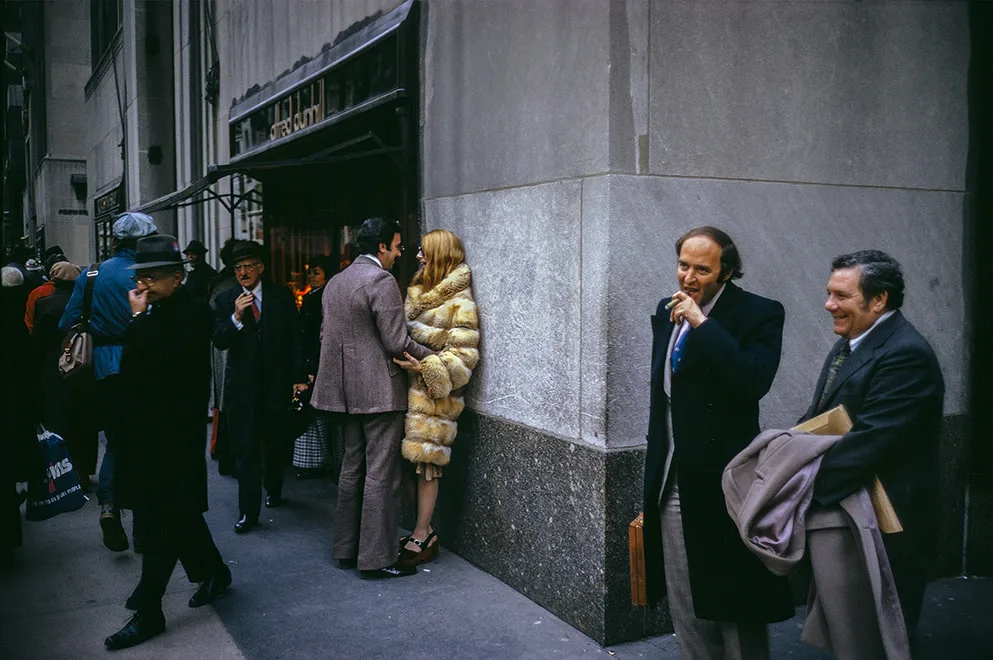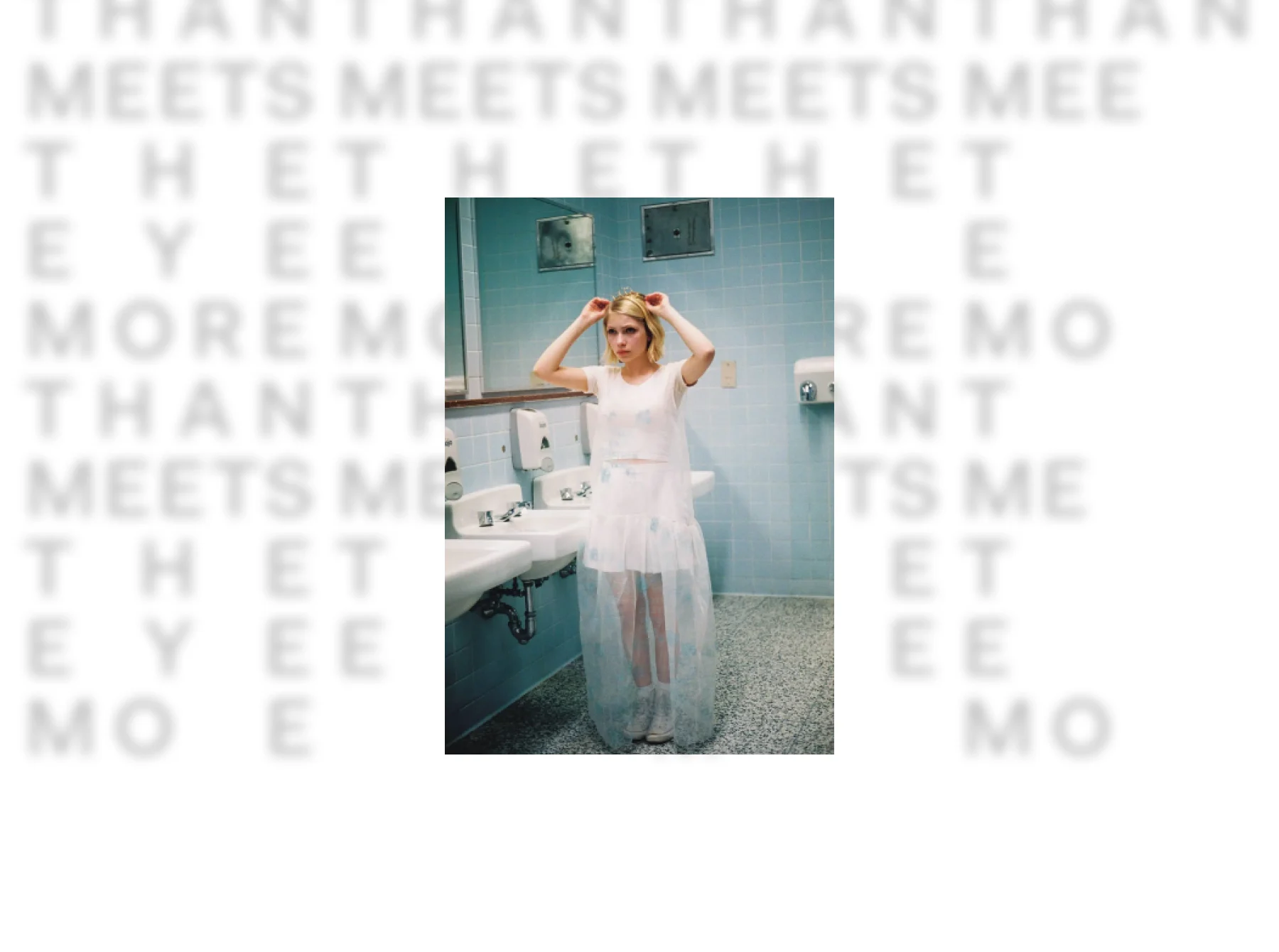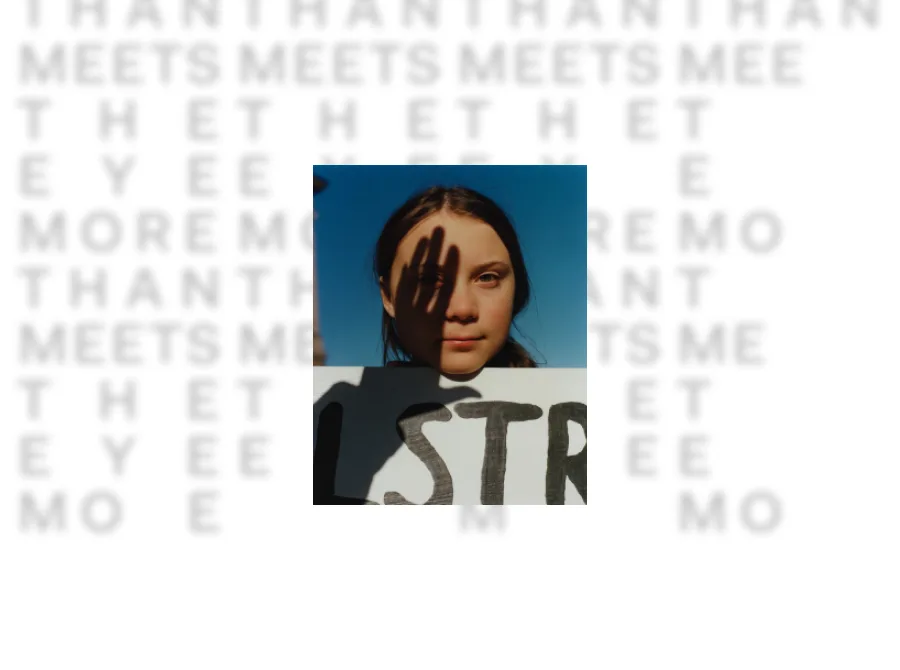

It is predicted that around 1.5 trillion images will be taken in 2021. It’s safe to assume that, out of those, only a handful will become future classics. With this in mind, More Than Meets the Eye is a series by writers Ryan White and Douglas Greenwood that dissects the most talked-about photographs of the last decade, questioning the composition, cultural context, and the behind-the-scenes stories that make the image so remarkable, shareable, memorable, and a cut above the rest.
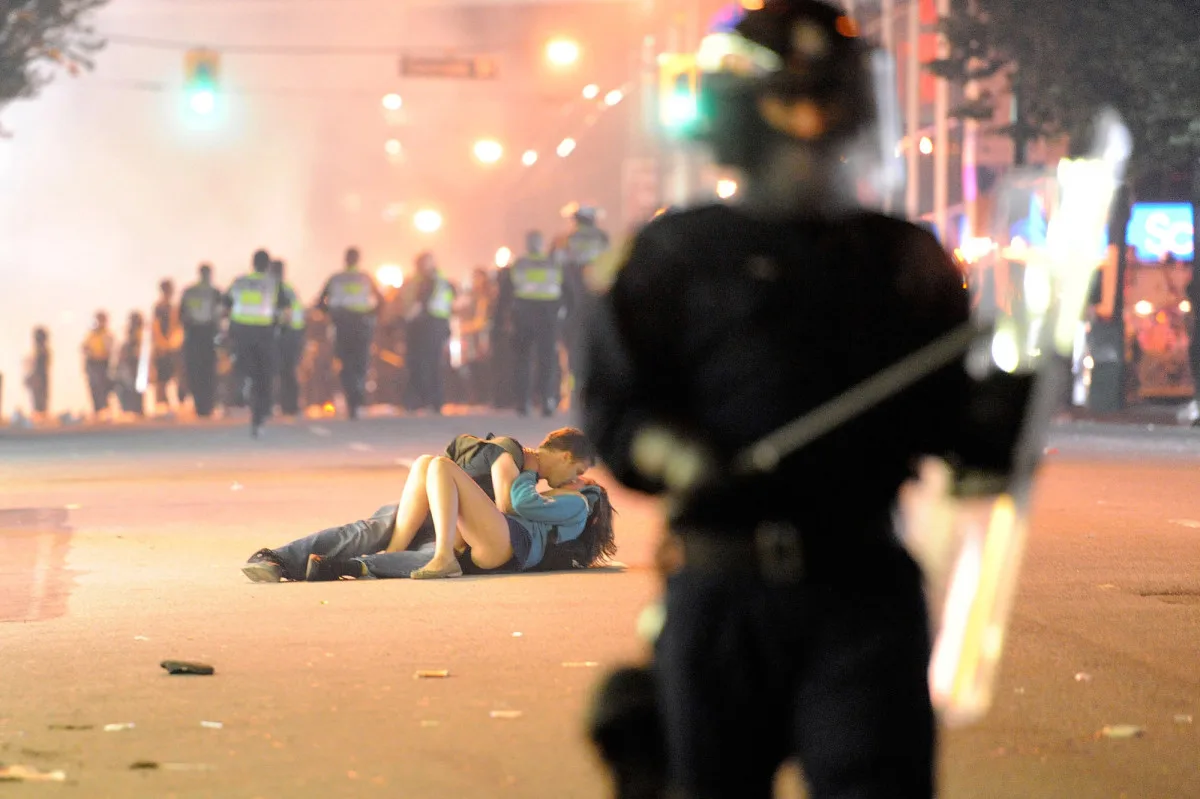
On a summer’s night in 2011, around 100,000 people spilled out onto the streets of downtown Vancouver, British Columbia, Canada, following the Stanley Cup Final hockey game between the Boston Bruins and the Vancouver Canucks. As disappointed Canucks fans left the arena, the atmosphere quickly turned, and what started as a civilized match devolved into violence and destruction. Fans in the streets set flags and hockey jerseys alight in protest; cars were overturned, and, before long, a riot engulfed the city. The photographer Richard Lam was at the Stanley Cup playoffs that night. He was working with Getty Images, filing his shots of the earlier playoffs when the riot commenced.
Lam was a local and knew Vancouver and its happenings well. In 1994, hockey-goers had also rioted in the streets after the Canucks’ loss to the New York Rangers. “I wanted to go out and cover this breaking story,” he says. “Someone told me things were heating up in another part of the downtown core and I made my way to that spot. Once there, there was a lot of activity: fire, looting, and loitering. Soon, the riot police started to clear the area so the fire department could put out the fires. I just went with the crowd.”
The crowd itself was a throng of rioters, and bystanders caught up in their movement, but the police, frantically trying to clear the situation, didn’t see a difference between the two. A barrage line of officers knocked two passers-by, Alexandra Thomas and Scott Jones, to the ground with their riot shields. To console his girlfriend in the heat of the moment, Jones leaned in to kiss her. And in the distance, Lam took a photograph that would perfectly symbolize our human want for kindness and consolation in the moment. It’s an image known now as “Vancouver Riot Kissing Couple.”
Context
The turn of the decade was awash with riots across the world. Just a few months later, Occupy Wall Street began its high profile tirade against corporate greed and financial inequality. Across the Atlantic, in London, the shooting of Mark Duggan had sparked revolt against police brutality, setting the city ablaze for five days. Only a year before that, students in the capital had rioted in retaliation to the increase in student fees. Meanwhile, the largest and most seismic protest of the 21st century, The Arab Spring, was raging from Western Sahara to Yemen, demanding democracy, justice, and freedom for millions of people. Across Europe, strikes as a reaction to public spending cuts had punctuated the new decade.
The images that prevail from these demonstrations—some in the name of democracy and justice, others, as is the case with the Stanley Cup riot, simply as a conduit for male violence—are the ones that push back on what we expect. Some are feats of human ingenuity, human, and compassion, others reveal the depth of the impact of institutional violence.
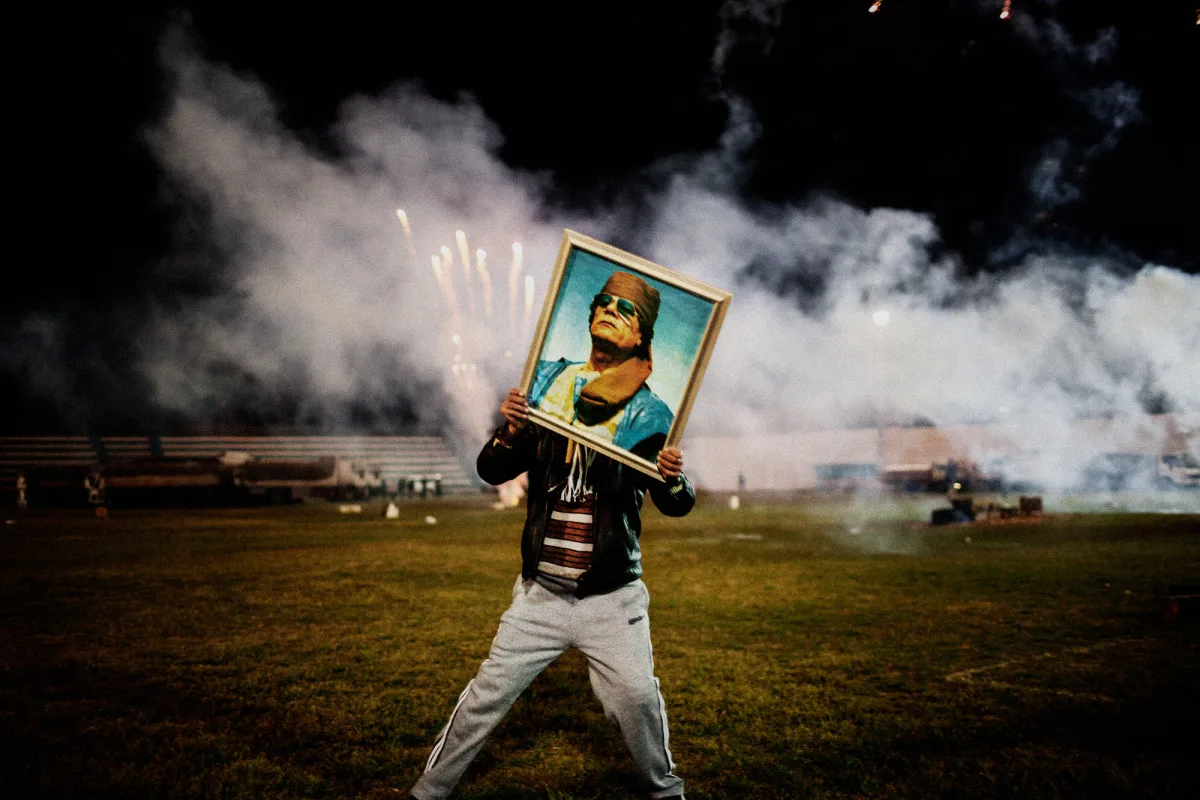
Composition
Jonathan Bachman’s image from a Black Lives Matter protest in Baton Rouge, Louisiana, in which a woman, Ieshia Evans, dressed in a long flowing dress stands calmly and defiantly in face of armed police guards swarming toward her, became an image emblematic of these protests. Here was a woman who would not bow to the militarized violence of the state, her calmness perhaps a lack of fear at the point at which she had been pushed so far.
In contrast, Lam’s image evokes the triviality of the violence playing around its center focus. These are not rioters fighting for their lives, or breaking decades of injustice; they are channeling rage for rage’s sake, and causing unnecessary destruction in the process. Thomas and Jones’ kiss—framed between the swathes of police in riot gear and an angry mob of drunken Canadian men—is subversive.
“I have heard many reasons why people like the image and they are all different," Lam says. “Personally I think it’s a tender moment of care and compassion. Others see it as a nice moment amidst the chaos.”
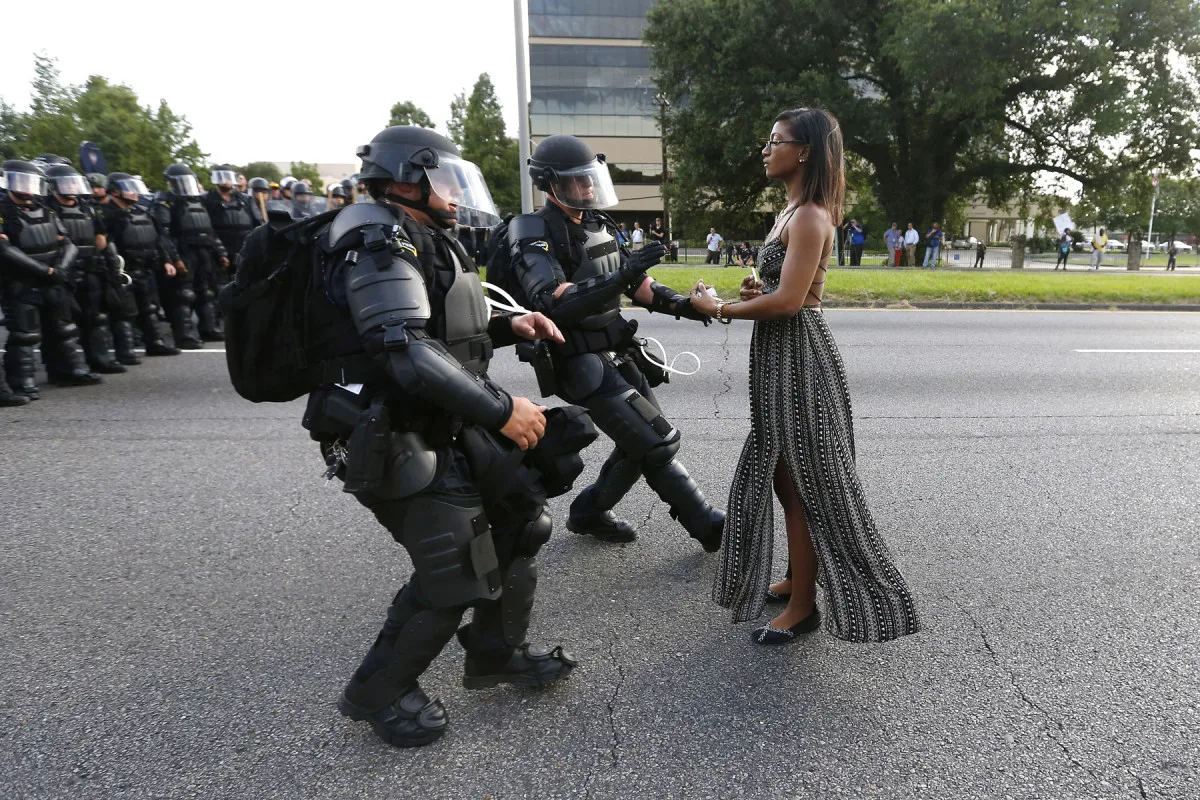
Creation
The image itself, in an oddly prophetic turn of events, wasn’t even intended to capture Thomas and Jones’ kiss. “When I saw the moment, my only thought was that someone was hurt after the riot police made their run to clear the crowd and [that] someone else was there to help the injured person,” Lam recalls. “When I first saw the image, I thought it was a nice frame but really it was at the end of a very long day that started at 5:30 AM. It was around midnight when I finally saw the image on the editor’s screen. I didn’t see the couple kissing until after a colleague complimented me on the image when I was back at the arena.”
In fashion imagery, it’s meticulous thinking that makes a masterpiece. But in photojournalism, the codes are different. There is, as Lam’s encounter proves, no such thing as a fully planned shot. Often, the most memorable are the ones that happen purely through a meeting of many different circumstances. In the case of “Vancouver Riot Kissing Couple,” that’s the riots in the first place, the presence of a young couple in the midst of it, as well as Lam’s willingness to follow the rioters with his camera, accidentally shooting beyond what so many others were focused on.
Impact
It could be argued that the photo Lam took draws more parallels between the street photography of the 20th century than it does the protest photography we’ve been comparing it to. Images like those made by Henri Cartier-Bresson, Joel Meyerowitz, and Diane Arbus, the great pioneers of the medium, who paced the streets of New York in search of something peculiar, be it small or grand, amongst trudging normality. This was, after all, a moment of human oddity—a riot sparked by a hockey match—rather than a seismic moment in history. Street photography is a dying art–a camera’s presence can be interpreted in so many different ways now; it is rarely a tool for observation without a conscious reaction from its subjects. And yet, images like Lam’s do represent what is possible when a camera serves no function other than to tell a fleeting story.
